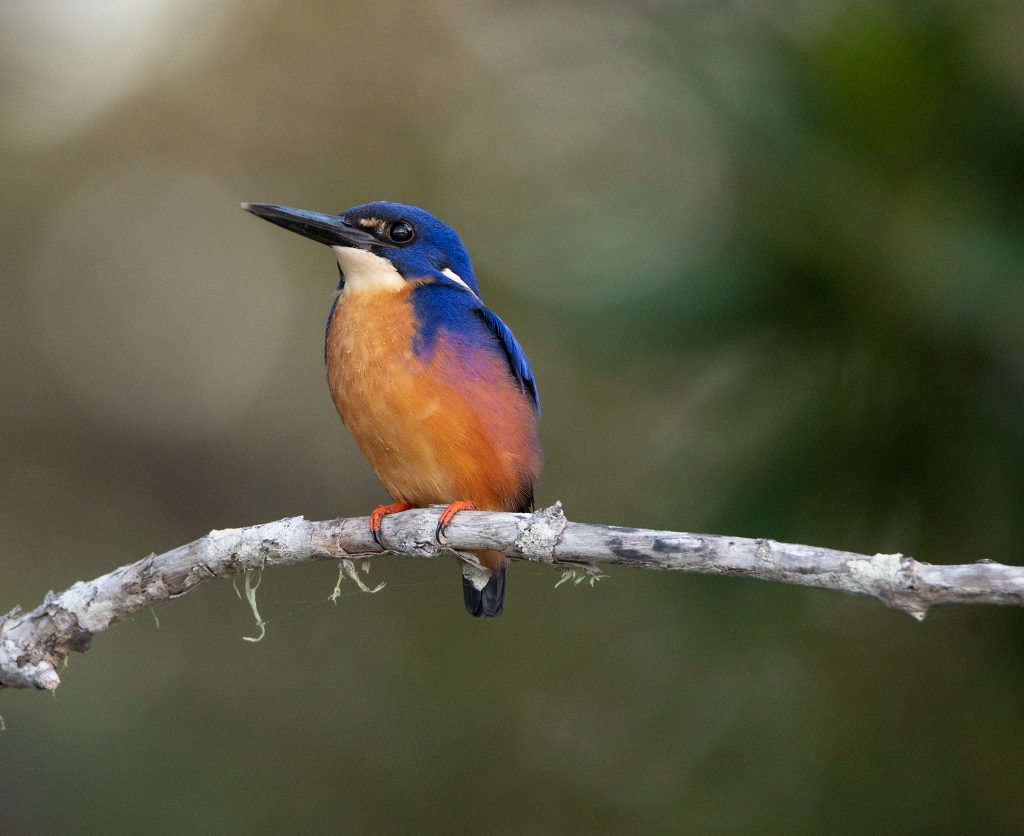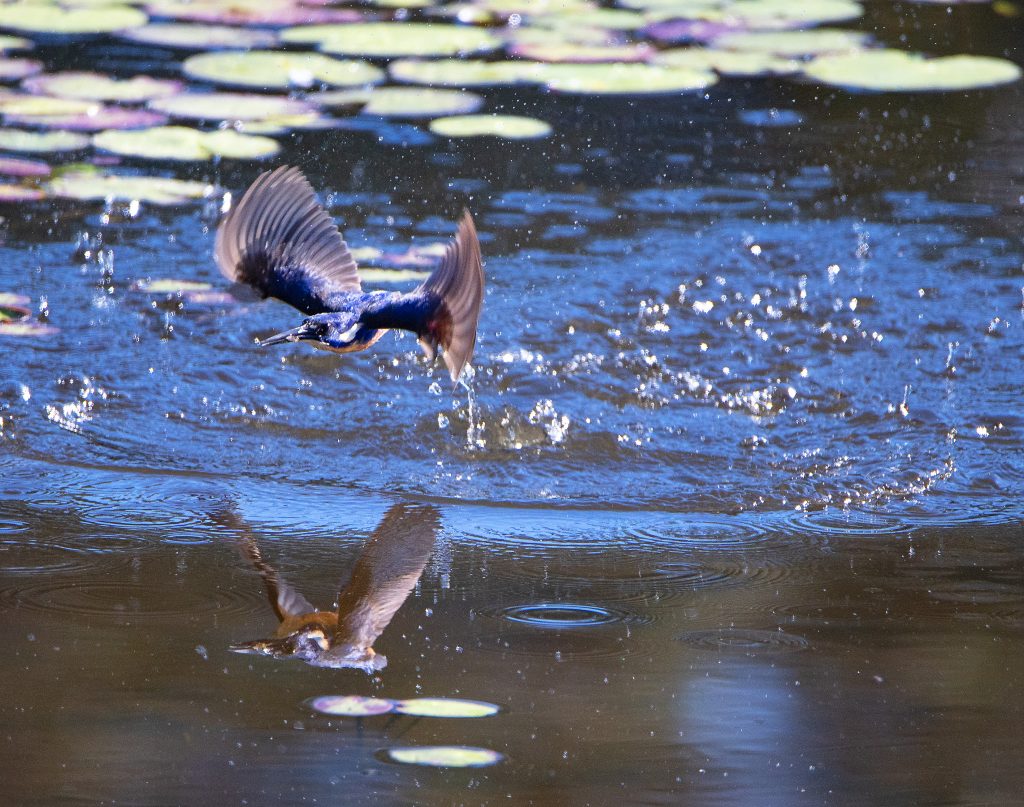The Azure Kingfisher is a dazzlingly beautiful creature. That’s one reason why I just can’t seem to stop myself from photographing them. Mind you, this is a very shy bird that doesn’t like to be watched, so getting a good photograph is not without its challenges.
As well as being ridiculously pretty, they are also rather oddly constructed, with almost no tail, and a beak that is half the length of the body.
Azure Kingfishers are fishing experts. They are most often found perched on low branches, staring intently at the water surface for signs of movement. I have watched them follow platypuses, hoping to snatch any tasty morsels that the mammals stir up.
When an Azure Kingfisher spies potential prey, the excitement is barely contained as they bob their heads and vibrate their wings before launching at the water.

These birds form monogamous pairs with strict territories that they will defend. They nest in chambers dug into mud embankments. The tunnels are usually around a metre in length. It takes a pair of Azure Kingfishers between three and seven days to dig their breeding burrow. The adults take turns excavating, using their feet.
As you might imagine, these nests are very susceptible to flooding. Large rain events during breeding will often spell doom for eggs and chicks. Nests may also be robbed by brown snakes.
These birds seem to be diminishing in number across their range. The IUCN Red List considers the population to be in overall decline, but not yet threatened.

We are blessed in Noosa to enjoy so many waterways, both fresh and saline. That means there are plenty of places to discover Azure Kingfishers. I have photographed them amongst the mangroves of Noosa River estuary, the shores of Lake Macdonald, and alongside almost every stream in the shire.
Recently, it was discovered that Azure Kingfishers have a special way to stay cool: by reflecting solar radiation. A 2018 Australian study found that some birds can reflect the hottest part of sunlight, the NIR or near infrared spectrum. The Azure Kingfisher’s orange chest is spectacularly good at this, helping the birds to regulate their temperature during hot weather. It is the structure of the chest feathers that provides this special capability.
Now, you might think it would be better to have such insulating capacity on their heads and backs. But these birds spend much time on shady branches staring at the water. Presumably, much of the heat they receive is reflected back at them from the water’s surface. Thus, their chests are cleverly protected from heat rays.
How cool is that?

